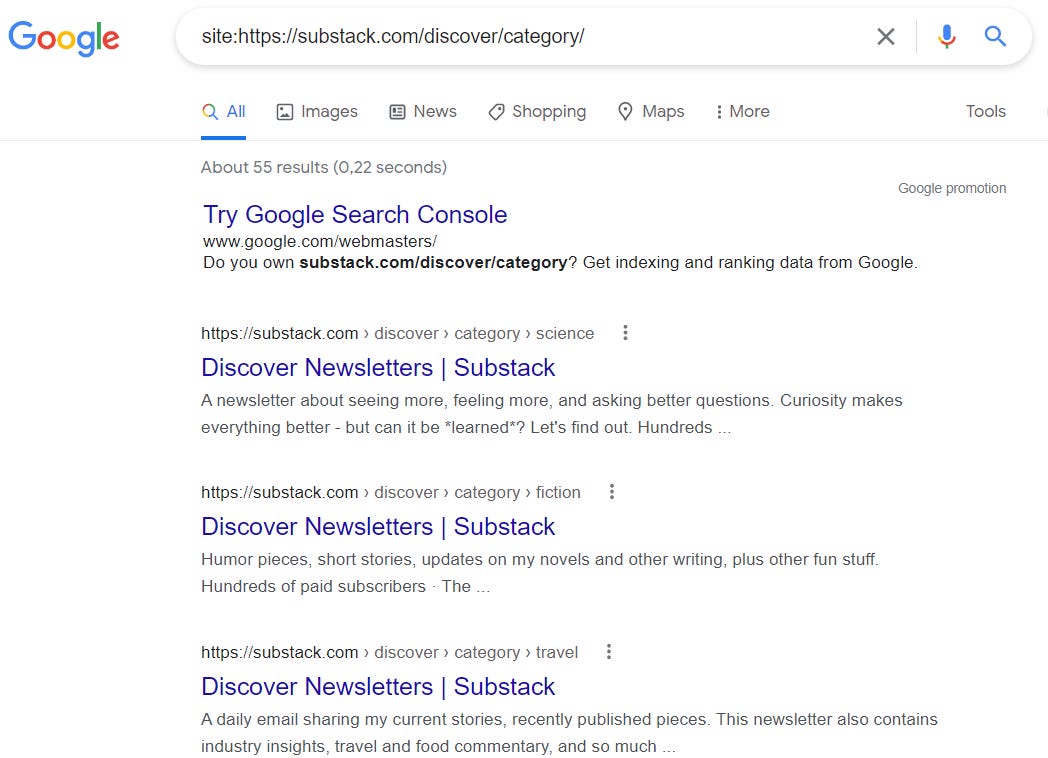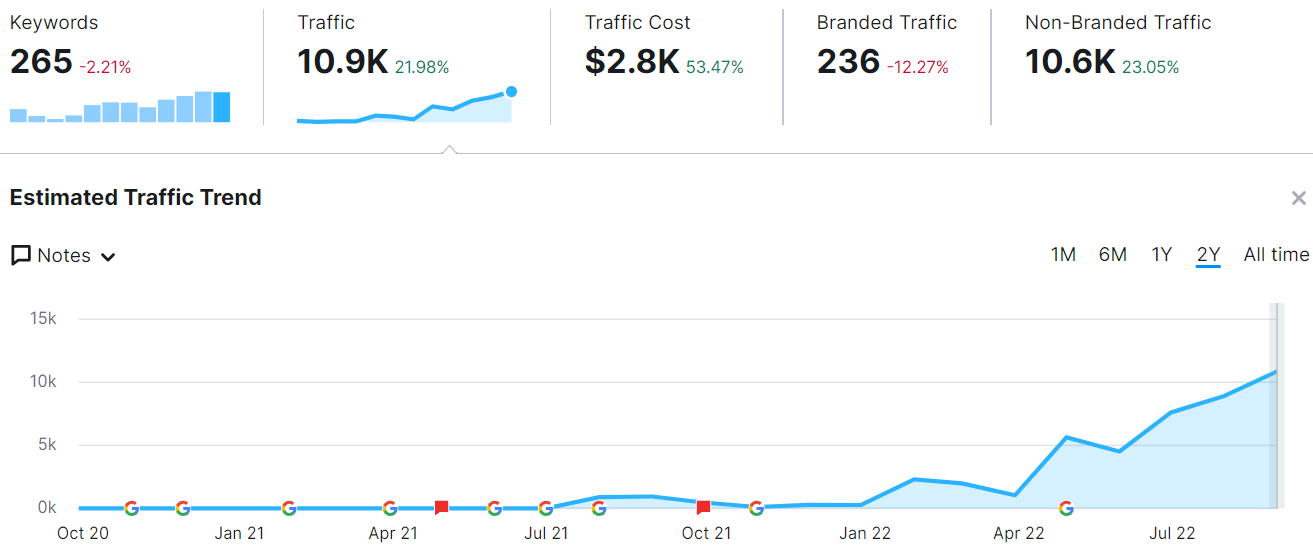Substack's SEO opportunity
Substack is a platform that has an opportunity to tap into an aggregator play by adapting its SEO strategy.
Before Substack, journalists and writers were gated by publishers. In that setup, writers had to endure low salaries, hard work, and fierce competition but got access to a large audience.
To date, the New York Times has 8M subscribers and gets 6.5M monthly visits to their homepage alone (according to Semrush). However, only a few writers get a job at the Times.
That same dynamic is true for every other publisher that bundled writers together with games and classifieds. But writers never owned their relationship with readers. The publisher owned it - just like Amazon owns the relationship with buyers instead of merchants.
Substack disrupts the old dynamic by offering writers an online platform to build a direct relationship with their readers and make a living. Writers don't need to know how to code or be technical. They can choose to publish free and paid content across blogs, newsletters, or podcasts without much friction.
In November 2021, Substack announced 1 million paying subscribers, equating to an annual GMV of at least $120m if every subscriber pays $10/month (Substack has a take rate of 10%). TechCrunch recently reported that Substack makes $9m in ARR, which leaves quite the gap between its $650m valuation. As a result, Substack postponed its plans for raising a series C round of funding. Substack needs to make a lot more revenue to succeed. [x, x]
But how?
Substack's revenue drivers
Every system is a set of inputs and outputs. Let's look at Substack's system components.
The business model is straightforward: Substacks takes 10% of paid subscriptions (to newsletters or podcasts). There are 3 ways to increase revenue: bring more writers to the platform, drive more paying subscribers, or a higher take rate.
Option 3 is the most effective but also the riskiest one. If the service gets more expensive, it becomes harder for potential and current writers to make a living, and the platform becomes more sensitive to competition. Platforms like Twitter or Linkedin are already building out publishing tools and provide access to lots of potential subscribers. Substacks needs to strengthen its moat to build a defensible business.
Option 1 and 2 are attractive because attracting more writers is a function of finding more readers. More readers mean more paying subscribers, leading to more writers and GMV. In other words, by focusing on the demand side, the supply side might take care of itself.
Where have we heard this before? Aggregator theory!
From platform to aggregator
Substack has already taken steps to connect more readers with writers through an aggregator play. In January 2021, they created the first version of a /discover page that lists the top newsletters in categories like business, finance, crypto, or science. Like Airbnb categories for places, Substack has an opportunity to go after content category keywords like "finance newsletter", "best finance newsletters" and other variations.
Unfortunately, Substack isn't leaning into the SEO side of its aggregator opportunity because all discovery pages have the same title without any keywords.
The discovery pages could give users more information about the different newsletters so they can subscribe to the right ones.
But category pages only go so far for organic traffic because the number of categories and related keywords is limited.
There is a far larger opportunity for Substack: topic pages.
Substack has 3 entities in its ecosystem: writers, newsletter categories, and newsletter topics. Substack already goes after writer names with its subdomains. You can see the intentionality through their extensive sitemap that links to every publication.
Substack could optimize its category pages for the second entity, newsletter categories, with minor modifications. They already exist and just need an update of titles and information.
But Substack doesn't aggregate newsletters by topics yet, which is by far the largest opportunity in my mind. Good publisher SEO is building landing pages for all sorts of topics. One example is the NY Times's topical landing page for the 2022 Midterm Elections.
Topical landing pages aggregate all articles related to a specific topic and generate the necessary freshness to appear in organic results and SERP Features for newsworthy topics. Substack has the right content for this SEO strategy.
Substack could build a growth loop to attract more readers, which in return would attract more writers. Writers could decide for themselves if they want their articles to appear on topic pages or not so that Substack can keep its status as a platform.
Staying a platform while venturing into aggregator plays
A famous Bill Gates quote about platforms says:
A platform is when the economic value of everybody that uses it, exceeds the value of the company that creates it.
Substack hits exactly this definition: it's a platform because it allows creators to build businesses that, in sum, exceed Substack's value.
The aggregator play I outlined above isn't mutually exclusive to platform benefits, but Substack will have to set strong constraints not to become another publisher. A big part is allowing creators to own the relationship with their readers. Another part is interoperability, the chance to move away from Substack and not lock creators in, even when it's economically attractive.






